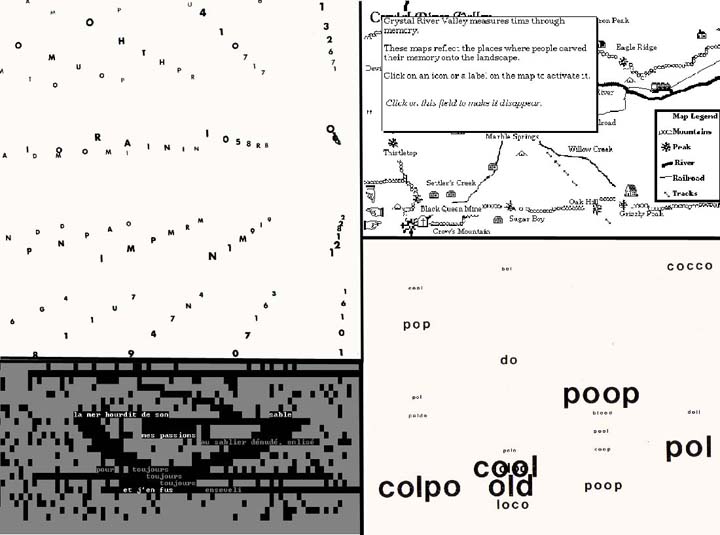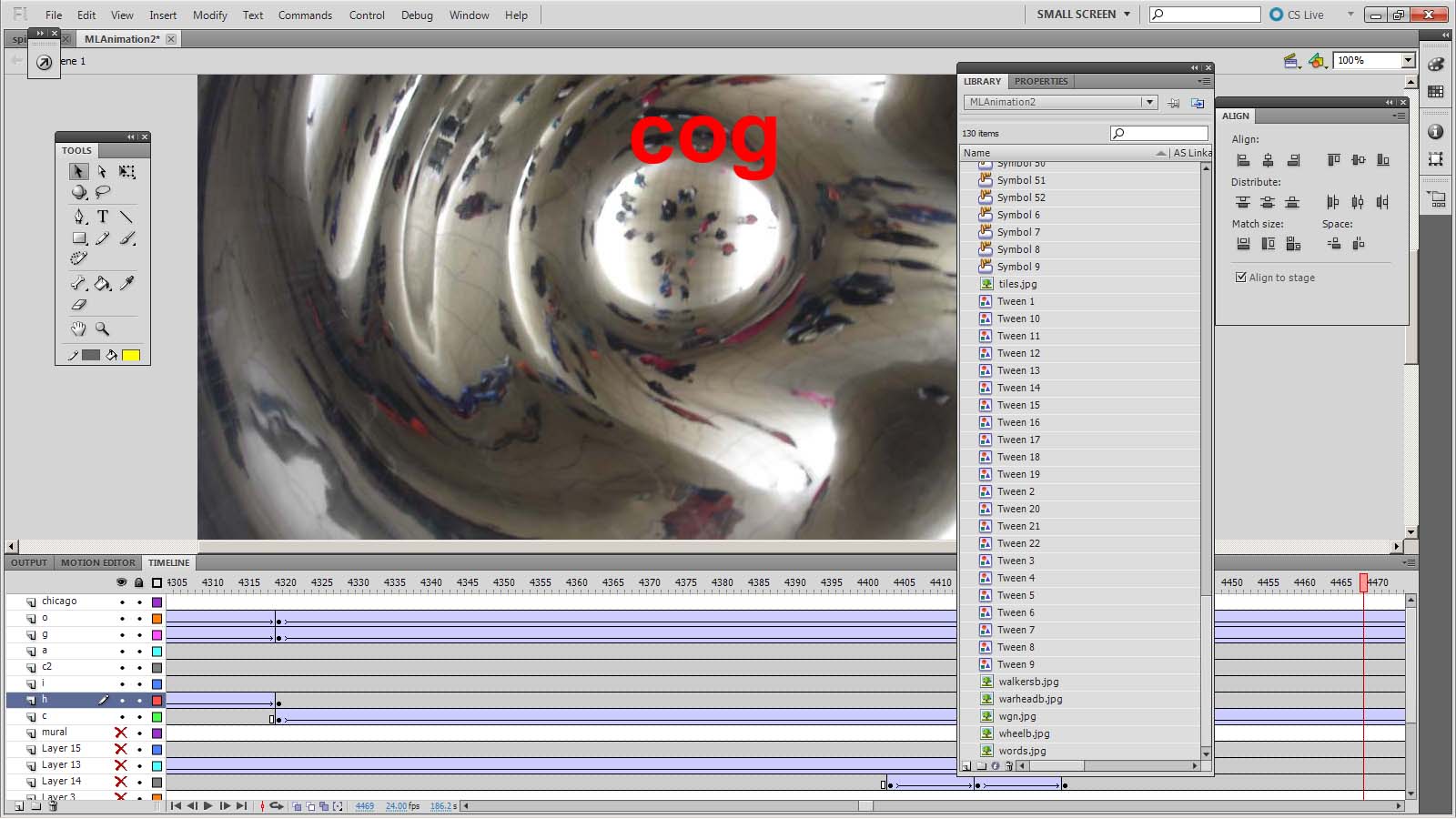Flash components critically reveal what works are comprised of: a timeline, layers, and frames; it contains a library, containing images and other media, symbols, and motion tween(s). Its keyframes indicate what you see on a stage. Digital literature in new and old forms is made of variations of these elements. Flash has shown how texts transpire on performative ground, representing something that happens in stages, on a stage.
I’ve never felt it difficult to broadly define and identify the types of works using software to synthesize disparate artistic elements: Projected works require viewing without physical interaction, and exploratory (or interactive) works enable users to establish parameters or pathways. Methods used by digital authors boil down to: 1) Visual animations including static and/or kinetic texts of all sorts, 2) hypermedia narratives, including virtual objects, games, and manipulations, and 3) expanded constructive models, in which finite user input is required to build content (sometimes collaboratively). In any type, works may contain random or constrained elements. These are the foundations of electronic writing. Flash works representing these categories, portraying the spectacular and fluid presentation of words, interactivity, gaming, multimedia play, and collaborative composition, include Brian Kim Stefans The Dreamlife of Letters, Dan Waber’s Strings, Maria Mencia’s Birds Singing Other Birds’ Songs, varied hypertexts by Larsen, games by Jason Nelson and Marko Niemi, and the Remixworx project, though a much longer list could be offered.
We will be inclined to experiment, whether or not Flash exists. Here you see my latest effort in a concerted series of topical anagrammatic text-movies, whose multi-leveled process included, sequentially: capturing the pics, creating the text, constructing the animation, and then plotting the text animation. Flash has facilitated creating the animations, but it could have been done without it. Worthy of note in this regard is that my most recent large-scale work, Funk’s SoundBox 2012, an audio project I felt certain would be Flash-based—along the lines of Jhave Johnston’s MUPS project—was instead created with JavaScript and html5 with great success.
There may be some designed obsolescence going on within Adobe. Anyone working with Flash knows that methods of programming interactivity with buttons have changed with CS6’s release, and ActionScript 2 is no longer supported. Both alterations are inconvenient, generally slowing down programmatic process and maintenance.
Nonetheless, it is doubtful design obsolescence in electronic writing is going to occur. Eliminating the software, any software, interestingly suggests the end of software as a whole, and thus a culture that creates need for programmers and programming. Flash has offered great command over text, imagery, movement, etc. without presenting a lot of difficulty. A friendly era for presenting animated, synthetic, processed works on our desktops may pass, and in the distance ahead and behind, continuous technical innovation built on engaging foundations.


